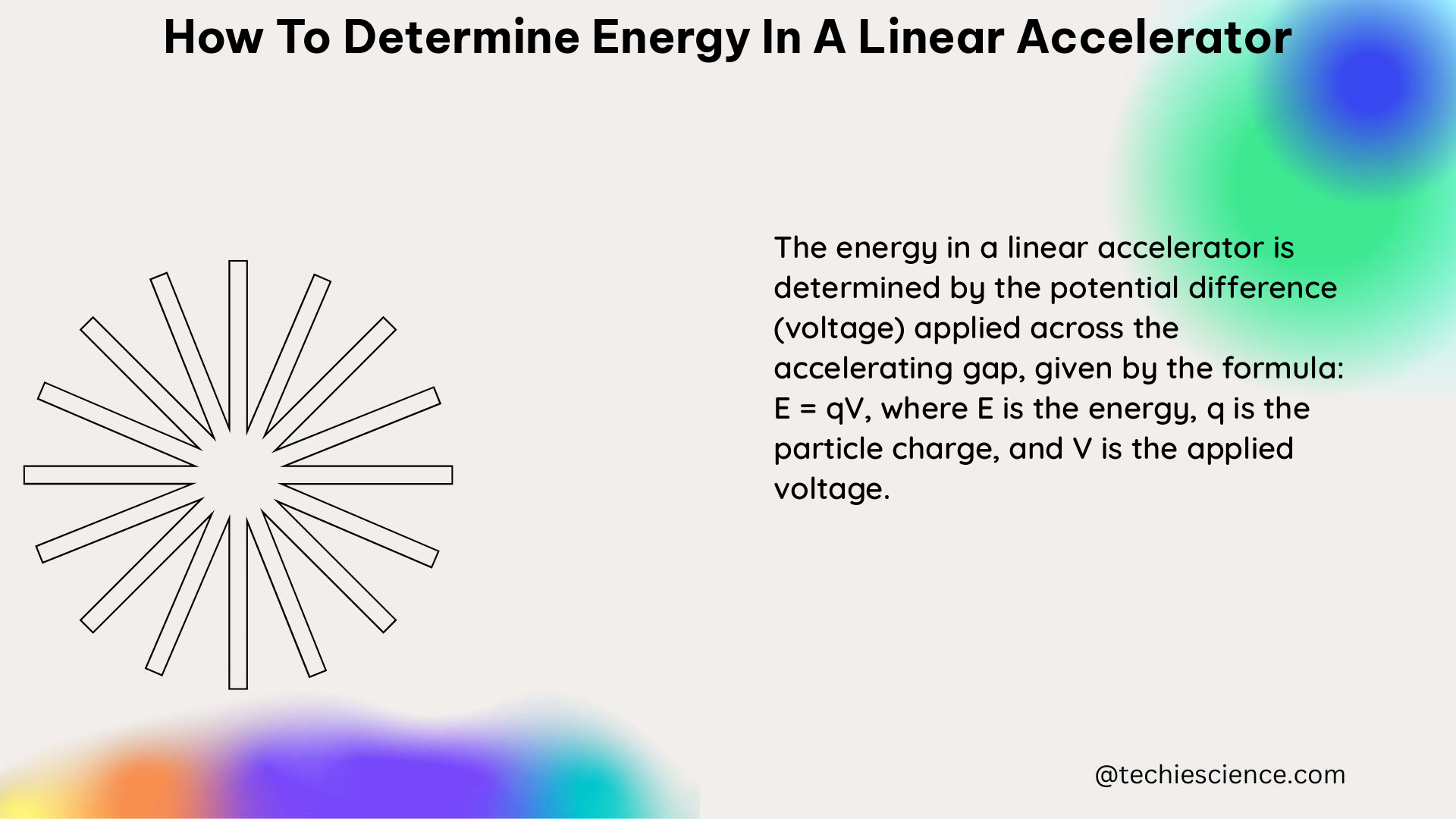Determining the energy in a linear accelerator is a crucial step in ensuring accurate and precise radiation therapy. This comprehensive guide will provide you with a detailed understanding of the methods and techniques used to measure the energy spectrum of a linear accelerator beam.
Introduction to Linear Accelerator Energy Determination
A linear accelerator (linac) is a device used in radiation therapy to generate high-energy beams of electrons or photons. The energy of the beam is a critical parameter that affects the depth of penetration and the dose distribution in the patient’s body. Accurate determination of the energy spectrum is essential for optimizing the treatment plan and ensuring the safety and efficacy of the radiation therapy.
Measuring Beam Transmission through Materials

One approach to determine the energy in a linear accelerator is to measure the transmission of the beam through different materials and thicknesses using an ion chamber. The ion chamber is a device that measures the ionization produced by the radiation beam, which is directly related to the energy of the beam.
Ion Chamber Calibration and Validation
Before conducting the transmission measurements, it is crucial to ensure that the ion chamber is properly calibrated and validated. This can be done by comparing the ion chamber perturbation factors determined by the TRS-398 calibration protocol and EGSnrc Monte Carlo simulations. The differences between the two methods should be within 0.57% to ensure the reliability of the ion chamber measurements.
Optimizing the Number of Transmission Measurements
The number of transmission measurements should be optimized to achieve efficient spectrum reconstruction. The study found that 10 transmission measurements were sufficient to provide accurate results, as the rate of increase in the spectrum reconstruction accuracy plateaued after 10 measurements.
Reconstructing the Energy Spectrum
The energy spectrum (ES) is then reconstructed using an iterative algorithm based on a mathematical model of the spectrum. This algorithm takes the transmission measurements and the ion chamber response as a function of photon energy (obtained from Monte Carlo simulations) as inputs and iteratively adjusts the ES until the calculated transmission matches the measured values.
Validating the Reconstructed Energy Spectrum
To evaluate the accuracy of the spectrum reconstruction method, the reconstructed ES is compared to the ES determined by the Monte Carlo simulation. The distribution of the reconstructed ES should be clearly similar to the reference ES.
Dose Calculations in Homogeneous and Heterogeneous Media
The dose distributions in water calculated using the reconstructed ES and the Monte Carlo simulation should be similar within a 2% local difference. However, in a heterogeneous medium, the dose discrepancy between the two methods can be greater than 5% when a complex beam delivery technique composed of 171 control points is used.
Factors Affecting Energy Spectrum Determination
Several factors can influence the accuracy of the energy spectrum determination, including:
-
Beam Hardening: The energy spectrum of the beam can be affected by the materials in the beam path, such as the treatment head components and the patient’s body. This can lead to beam hardening, where the lower energy photons are preferentially absorbed, resulting in a shift in the energy spectrum.
-
Scatter Radiation: Scatter radiation from the patient’s body and the treatment room can also affect the energy spectrum, as it can introduce lower energy photons into the beam.
-
Beam Delivery Technique: The complexity of the beam delivery technique, such as the use of multiple control points, can impact the accuracy of the energy spectrum reconstruction, especially in heterogeneous media.
-
Measurement Uncertainties: Uncertainties in the ion chamber measurements, the Monte Carlo simulations, and the spectrum reconstruction algorithm can also contribute to errors in the energy spectrum determination.
Practical Considerations and Recommendations
To ensure accurate energy spectrum determination in a linear accelerator, it is recommended to:
- Regularly calibrate and validate the ion chamber used for the transmission measurements.
- Optimize the number of transmission measurements to achieve efficient spectrum reconstruction.
- Carefully model the beam transport and scatter in the Monte Carlo simulations to accurately represent the energy spectrum.
- Validate the reconstructed energy spectrum against the Monte Carlo simulation results, especially in heterogeneous media.
- Continuously monitor and update the energy spectrum determination process as the linear accelerator and treatment techniques evolve.
Conclusion
Determining the energy in a linear accelerator is a critical step in ensuring the accuracy and safety of radiation therapy. By following the methods and techniques outlined in this comprehensive guide, you can accurately measure the energy spectrum of a linear accelerator beam and optimize the treatment planning and delivery process.
References
- Relativistic Energy | Physics – Lumen Learning
- Determining the energy spectrum of clinical linear accelerator using an optimized photon beam transmission protocol
- Accelerator beam data commissioning equipment and procedures
- Report of the TG-106 of the Therapy Physics Committee of the AAPM
- Determining the Energy Spectrum of Clinical Linear Accelerator using an Optimized Photon Beam Transmission Protocol

The lambdageeks.com Core SME Team is a group of experienced subject matter experts from diverse scientific and technical fields including Physics, Chemistry, Technology,Electronics & Electrical Engineering, Automotive, Mechanical Engineering. Our team collaborates to create high-quality, well-researched articles on a wide range of science and technology topics for the lambdageeks.com website.
All Our Senior SME are having more than 7 Years of experience in the respective fields . They are either Working Industry Professionals or assocaited With different Universities. Refer Our Authors Page to get to know About our Core SMEs.